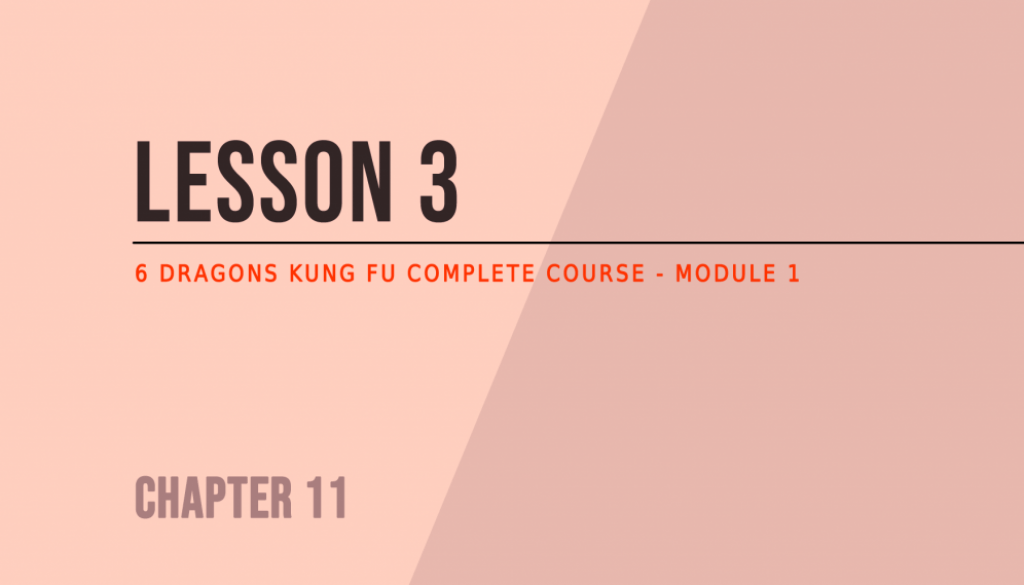Lesson 3 – The basics of ground mobility
The movement on an incredibly different field
As we said in the past lessons of this chapter (read Lesson 11.1), the ground is a totally different battlefield if compared to a normal standing situation:
- The striking naturally exists but its dynamics are not the same (muscle chains, relation with gravity, inertia, etc.)
- Things like timing, speed and reflexes are always important but in a different dimension (eg. explosive hit-and-move-back moves are almost absent)
- The weight of the shift is no longer managed mostly by the legs, it is divided over almost the entire surface of the body
- …
The more we are near to the floor, the more the things change.
The 4 levels of height in a fight
During a combat, in 6 Dragons Kung Fu, we recognize 4 levels of height:
- First level – Standing (eg. the classical stance of a boxer)
- Second level – Very folded but without touching the ground (eg. a common stance of the wrestlers)
- Third level – At least on a knee and / or hand laid to the ground (eg. a common stance in Capoeira)
- Fourth level – Torso touching the ground (eg. a common stance of some BJJ guards)
The ones that we are discussing are the last 2.
The basic rules of ground mobility
The past lesson (read Lesson 11.2) should have given you an (at least generic) idea of what does it means to be in strict contact with the ground. Let’s see now a few basic rules to remember:
- The head should never touch the ground – No matter if you are supine or prone, your head must be in a safe and tactical position (ready to see / act)
- The sight is less effective on the ground – To move, you have to forget sight in favor of a good spatial memory; while you are clinging your opponent, it will not be rare to have a covered view, nevertheless, you will need a perfect perception of where you are (you and your limbs)
- Without coordination and muscle chain you will not move – As the snake slithers, you too must learn to use the entire surface of the body in a coordinated way to move (otherwise you will be extremely slow, read Use the body power: the muscle chain)
- To move fast, the body lengthens – No matter the direction, in most cases, if you want to move quickly in a straight line, it is necessary to perform movements with the body elongated (e.g. crawling, lateral rotations, etc.)
- To change direction, the body shortens – No matter where you want to go, in most cases, to perform rolls and direction changes you have to compress / close your body
- …
A note by Master Kongling – The time to talk about sparring hasn’t come yet, but it is fundamental that you test the validity of what we say in this course with experiments and exercise. Try with a partner a session of ground fighting (even without real blows and constricting techniques, read 5 effective ways to find a training partner).
In-depth video courses
- MUSCLE CHAIN for MARTIAL ARTS: How To – How to develop the capability to connect your body elements
- Basic 6 Dragons Kung Fu Exercises – A deep explanation of the fundamental technical exercises of 6 Dragons Kung Fu
In-depth articles
- HOW TO Avoid the GROUND FIGHTING – The rules to limit the occurrence of ground fighting in self-defense
- How to do sparring – The basic notions to face a serious and effective sparring path
Questions
Reply in the comments and share your experience:
- How long can you resist the 6 Dragons Kung Fu exercises on the ground?
<< Lesson 11.2 – Index – Lesson 11.4 >>
Author: Master Kongling
Founder of 6 Dragons Kung Fu.How to master 6 Dragons Kung Fu?
Are you searching for:
- Daily training exercises?
- Synthetic theory and concepts?
- A step by step path from white to black belt?
- A path (clear, consequential and gradual) designed to build real martial skills?
- A direct contact with Master Kongling?
Go to our Patreon page and choose a training plan: starting from the Practitioner level, you will gain access to all this and much more.
Inside each Premium Lesson, you will receive the same teaching (practices, tips, concepts, small secrets and corrections) reserved to the live students of Master Kongling.
Important - Once a certain number of registrations are reached, no other participants can be accepted. For more information write to: [email protected].









